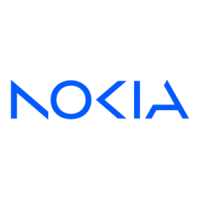Copyright
©
2005 Nokia. All rights reserved.
General information
30
Dead spots and dropouts - Dead spots are areas where
radio signals cannot be received. Dropouts occur when the
smartphone user passes through an area where the radio
signal is blocked or reduced by geographical features or
large structures.
Signal impairment - Distance and obstacles can cause
signals to become out-of-phase. They can also cause
reflected signals. Both situations result in a loss of signal
strength.
Low signal strength - Due to either distance or obstacles,
the radio signal strength from a cell site may not be strong
enough or stable enough to provide a reliable data
connection for communication. Therefore, to ensure the
best possible communication, remember the following
points:
• The data connection works best when the smartphone
is in a stationary position. Attempting wireless data
communication while in a moving vehicle is not
recommended.
• Do not place the smartphone on a metal surface.
• Check that the signal strength on the smartphone
display is sufficient. Moving the smartphone within a
room, especially towards a window, may result in a
stronger signal. If a signal is not strong enough to
support a voice call, data connection should not be
attempted until you can find a location with better
signal reception.
Data connections
GSM data calls
A GSM data call enables data transmission rates of up to
14.4 Kbps. For availability and subscription to data
services, contact your network operator or service
provider.
High-speed data calls (High Speed
Circuit Switched Data, HSCSD)
HSCSD enables data transmission rates of up to 43.2 Kbps,
which is four times faster than standard data rates of the
GSM network. HSCSD is comparable to the speed of many
computer modems that communicate with fixed
telephone networks.
For availability and subscription to high-speed data
services, please contact your network operator or service
provider.
Note: Sending data in HSCSD mode may drain the
smartphone’s battery faster than normal voice or data
calls, as the smartphone may send data more
frequently to the network.

